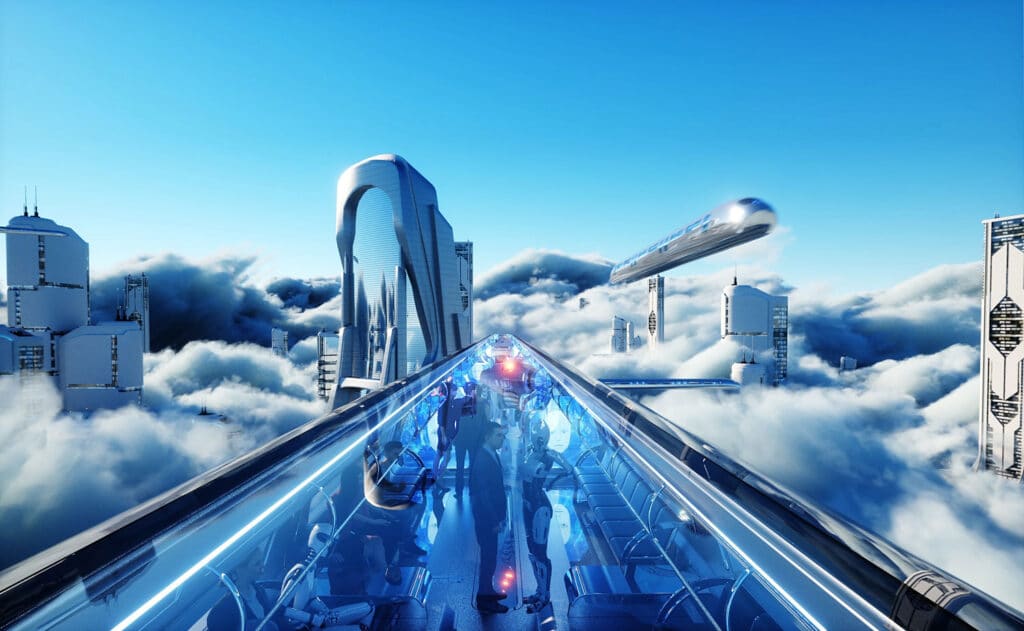The New Mobilities
Implications for Transportation and Parking
Many new transportation technologies and services are under development and becoming commercially available. This article discusses how they are likely to affect future transportation and parking, and how industry can minimize their risks and maximize their benefits.
Much of the information in this article is extracted from his book, New Mobilities: Smart Planning for Emerging Transportation Technologies.
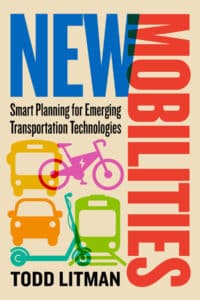
Table of Contents
Introduction
Many new transportation technologies and services, such as those listed below, are currently under development and becoming commercially available. They have tantalizing potential. They may allow people to scoot, ride, and fly like never before. However, their impacts and opportunities are difficult to predict. How should parking and mobility industries prepare?
The new mobilities are widely promoted. Proponents offer images of happy passengers traveling in sleek vehicles, and predict, based on experience with previous innovations, such as personal computers and mobile telephones, that within a few years electric autonomous taxis, flying cars and pneumatic tube transport will replace most personal automobile and air travel, virtually eliminating vehicle congestion, parking, crash, and pollution problems. However, there are good reasons to be skeptical.
New modes and services are often less reliable and less affordable than proponents claim, and can create sometimes unexpected problems.
These new transportation technologies and services vary widely in their costs, benefits, and equity impacts. Slower but affordable, inclusive, healthy, and resource-efficient modes, such as active, micromodes and public transit improvements tend to provide the greatest variety of benefits. Vehicle sharing, MaaS, and telework are somewhat more costly and resource intensive, but can still play important roles in an efficient and equitable transportation system. The most glamorous new mobilities, the modes that tend to generate the most popular excitement, such as autonomous cars, air taxis and pneumatic tube transport, tend to be costly and provide limited benefits. They may be appropriate for some trips, but they require new management strategies and regulations to prevent increases in external costs and inequities. For example, air taxis and drones may be useful for occasional urgent trips to isolated areas, but they impose large external costs, so their use should be regulated and priced for efficiency and fairness. Most residents probably don’t want their neighborhood sky filled with flying cars carrying commuters each morning, or drones delivering pizza and beer to their neighbor’s late-night parties.
Development and Deployment Predictions
New technologies generally follow a predictable development pattern, called an Innovation S-Curve. An initial concept experiences development, testing, approval, commercial release, product improvement, market expansion, maturation, and eventually saturation and decline, as illustrated below. New mobilities are likely to follow this pattern.
Examples of New Mobilities (Litman 2021)
- Active Travel and Micromobilities. Walking, bicycling, and variations, including small, lower-speed motorized vehicles such as e-scooters, e-bikes, and cargo bikes.
- Vehicle Sharing. Convenient and affordable bicycle, scooter, and automobile rental services.
- Ridehailing and Microtransit. Mobility services that transport individuals and small groups.
- Electric Vehicles. Battery-powered scooters, bikes, cars, trucks, and buses.
- Autonomous Vehicles. Vehicles that can operate without a human driver.
- Public Transport Innovations. Improved transit convenience, comfort, safety, and speed.
- Mobility as a Service (MaaS). Navigation and transport payment apps that integrate multiple modes.
- Telework. Telecommunications that substitute for physical travel.
- Tunnel Roads and Pneumatic Tube Transport. New high-speed transport networks.
- Aviation Innovation. Air taxis, drones, and supersonic jets.
- Mobility Prioritization. Pricing systems and incentives that favor higher-value trips and more efficient modes.
- Logistics Management. Integrated freight delivery services.
Examples of New Mobilities (Litman 2021)
- Active Travel and Micromobilities. Walking, bicycling, and variations, including small, lower-speed motorized vehicles such as e-scooters, e-bikes, and cargo bikes.
- Vehicle Sharing. Convenient and affordable bicycle, scooter, and automobile rental services.
- Ridehailing and Microtransit. Mobility services that transport individuals and small groups.
- Electric Vehicles. Battery-powered scooters, bikes, cars, trucks, and buses.
- Autonomous Vehicles. Vehicles that can operate without a human driver.
- Public Transport Innovations. Improved transit convenience, comfort, safety, and speed.
- Mobility as a Service (MaaS). Navigation and transport payment apps that integrate multiple modes.
- Telework. Telecommunications that substitute for physical travel.
- Tunnel Roads and Pneumatic Tube Transport. New high-speed transport networks.
- Aviation Innovation. Air taxis, drones, and supersonic jets.
- Mobility Prioritization. Pricing systems and incentives that favor higher-value trips and more efficient modes.
- Logistics Management. Integrated freight delivery services.
Innovation S-Curve
Most innovations follow a predictable deployment pattern, often called in Innovation S-curve.
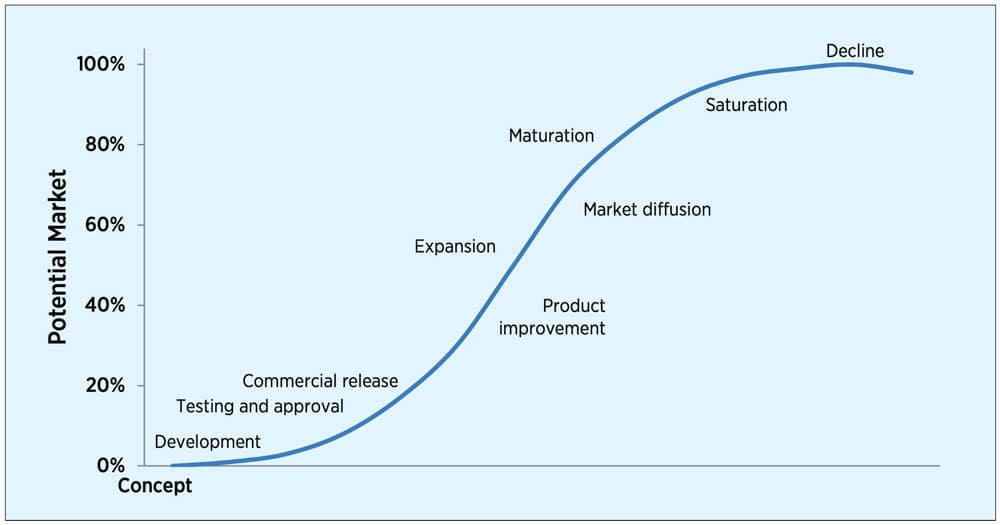
Some technologies, such as digital cameras, smart phones, and tablet computers, only required a few years between concept and broad market deployment. However, new transportation modes and service tend to take much longer. Motor vehicles last many times longer and cost far more than most other consumer goods. Most new vehicle technologies are initially unreliable and expensive – think of the first generation of automatic transmissions, air bags and electronic navigation systems. In addition, new modes and services can impose large costs on communities, including additional public infrastructure requirements, crash risk and sometimes noise and air pollution. For example, ridehailing tends to increase traffic congestion, and requires passenger pick-up and drop-off facilities (Schaller 2017). To reduce traffic congestion, energy consumption and pollution emissions autonomous vehicles will require dedicated lanes for platooning – numerous vehicles drive close together at relatively high speeds – which will require large public investments or reduce road capacity for non-autonomous vehicles. Air taxis will require special terminals, and will impose noise, risk and loss of privacy.

Consider, for example, the likely timeline for autonomous vehicle implementation. Optimists predict that within a few years, shared autonomous taxis will displace most private automobile travel, but there are good reasons to be skeptical (Kok, et al. 2017).
With current technology autonomous vehicle can only operate reliably in good weather on paved roads with have special maps, categorized as Level 4 operation. Significant progress is required to achieve Level 5 operation, which means that they can self-drive under all normal conditions. Even if that becomes feasible in the early 2020s, it will take a few more years of large-scale testing for them to be approved for unrestricted use on public roads. The first generation of autonomous vehicles is likely to be expensive and imperfect, limiting their sales to wealthy enthusiasts. Since motor vehicles last 15–20 years, on average, it takes decades for a new vehicle technology to dominate the fleet unless a major portion of otherwise functional vehicles are prematurely scrapped, and some motorists may resist the new technology, retaining their older automobiles. The figure below illustrates my predictions of autonomous vehicle sales, travel and fleet penetration.
Implications for Parking and Mobility Industries
The New Mobilities introduce both opportunities and risks to parking and mobility industries. Some, such as shifts from owning to sharing vehicles, and from automobile to active and micromodes (walking, bicycling, e-bikes and their variants), can reduce total parking demands. Others will require new types of parking and integrated services. For example, carsharing, electric and autonomous cars, and Mobility as a Service (MaaS) will require new types of parking with recharging stations, high-speed Internet connections, and cleaning services. Ridehailing, autonomous taxis and logistics management will require more parking spaces dedicated to passenger and goods loading. Mobility prioritization will involve new pricing and regulations to use roads and parking facilities more efficiently. Smart communities will respond by reducing parking requirements and implementing comprehensive, integrated parking and roadway management plans that maximize the benefits and minimize the risks of new transportation technologies and services. Parking and transportation management professionals can help guide these efforts. The follow section describes some examples.
How Communities are Planning for New Mobilities
Many experts and organizations offer guidance for implementing new mobilities (Henaghan 2018). These vary in perspective and scope. For example, The National Association of City Transportation Official’s Blueprint for Autonomous Urbanism (NACTO 2019) provides guidance for transformative policies and planning practices to create a people-focused autonomous future that reduces total vehicle travel, and offers mobility and opportunity to everyone, not just those in cars. The Shared Mobility Principles for Livable Cities (www.sharedmobilityprinciples.org) provides guidance toward the best outcomes for new mobility options. It recommends that governments use regulations and pricing to favor shared modes, limit vehicle traffic and more efficiently manage curb space, particular in cities.
Some jurisdictions are starting to develop strategic planning programs to prepare for emerging transportation technologies and services. Below are three examples.
The City of Seattle’s New Mobility Playbook (Seattle 2017) offers guidelines for implementing a broad variety of emerging technologies, including vehicle sharing, ridehailing, MaaS, and electric and autonomous vehicles. It identifies strategic goals that should be considered with evaluating specific policies, including safety, connectivity, vibrancy, affordability, and innovation. It critically examines how new mobilities can support or contradict those goals, defines new mobility principles, and identifies specific near-term policies that the city should implement to ensure that new mobilities support the city’s goals.
The Los Angeles Department of Transportation’s Transportation Technology Action Plan (LADOT 220), recognizes that “code is the new concrete,” and asks, “How do we focus on Transportation Happiness and Universal Basic Mobility with the same intensity as we have traditionally focused on moving cars and people faster?” It discusses the types of digital infrastructure that will be needed to support transportation innovations, and discusses issues such as data sharing, privacy, community outreach, and culture change.
The Denver region’s 2030 Mobility Choice Blueprint (2019) discusses potential benefits that can be achieved by taking a proactive approach to planning new transportation technologies. It defines various planning objectives (regional collaboration, system optimization, shared mobility, data security and sharing, mobility electrification, driverless vehicle preparation, and new transportation funding), describes how various regional organizations can collaborate to support these objectives, and identifies specific tactical actions to support this process.
Conclusions
Numerous new transportation technologies and services are currently under development. Policy makers and practitioners face countless decisions concerning how new mobilities will be incorporated into their communities. New mobilities have diverse benefits and costs, and so require comprehensive analysis of their impacts, including often overlooked effects on affordability, social equity, public health and environmental quality. To maximize the benefits and minimize the costs, communities must decide which new mobilities should be mandated, encouraged, regulated, restricted, or forbidden in a particular situation.
Predictions that autonomous electric taxis and flying cars will soon be cheap and ubiquitous, and displace most private vehicle travel, are made primarily by people with financial interests in these industries. Vehicle innovations tend to be implemented more slowly than other technological innovations due to high costs, strict safety requirements, and slow fleet turnover. Automobiles typically cost fifty times as much and last ten times as long as personal computers and mobile phones. Consumers seldom purchase new vehicles simply to obtain a new technology. Most vehicle innovations are initially costly and imperfect. It usually takes decades before they are common in the fleet.
The benefits of new mobility are contingent; they depend on how parking and roads are managed. With current policies, electric and autonomous cars, telework, air taxis, pneumatic tube transport are likely to increase total vehicle traffic and associated costs. Their overall benefits increase if they are implemented with mobility prioritization incentives that encourage travelers to choose the most efficient option for each trip.
New mobilities may affect commercial parking demands in several ways. Some new modes and services tend to reduce total vehicle ownership and travel, which should reduce overall parking demand, but they will require more sophisticated facilities and services that include vehicle recharging, software updating, cleaning and inspection stations, often located in multimodal mobility hubs. Property owners and local governments will need help designing and implementing integrated parking and mobility management systems. Who will they call? Parking experts!
References
- Denver (2019), 2030 Mobility Choice Blueprint, Denver Regional Council of Governments (www.mobilitychoiceblueprintstudy.com).
- Jennifer Henaghan (2018), Preparing Communities for Autonomous Vehicles, American Planning Association (https://www.planning.org); at https://bit.ly/2piKBhX.
- Irem Kok, et al. (2017), Rethinking Transportation 2020-2030: Disruption of Transportation and the Collapse of the Internal-Combustion Vehicle & Oil Industries, RethinkX (www.rethinkx.com); at http://bit.ly/2pL0cZV.
- LADOT (2020), “Transportation Technology Action Plan” Los Angeles Department of Transportation, https://ladot.lacity.org/projects/transportation-technology.
- Todd Litman (2021) New Mobilities: Smart Planning for Emerging Transportation Technologies, Planner Press; at https://islandpress.org/books/new-mobilities.
- Todd Litman (2022), Autonomous Vehicle Implementation Predictions: Implications for Transport Planning, Victoria Transport Policy Institute (www.vtpi.org); at https://vtpi.org/avip.pdf.
- NACTO (2019), Blueprint for Autonomous Urbanism, National Association of City Transportation Officials (www.nacto.org); at https://nacto.org/publication/bau2.
- Bruce Schaller (2017), Empty Seats, Full Streets: Fixing Manhattan’s Traffic Problem, Schaller Consulting (http://schallerconsult.com); at http://schallerconsult.com/rideservices/emptyseats.pdf.
- Seattle (2017), New Mobility Playbook, Seattle Department of Transportation (www.seattle.gov); at https://bit.ly/3Dr4Ahm.
- Shared Mobility Principles for Livable Cities (www.sharedmobilityprinciples.org).
Todd Litman is founder and executive director of the Victoria Transport Policy Institute.
-
This author does not have any more posts.

The Future of Transport for People and Goods
Continued urban development requires the ongoing evolution of sustainable and
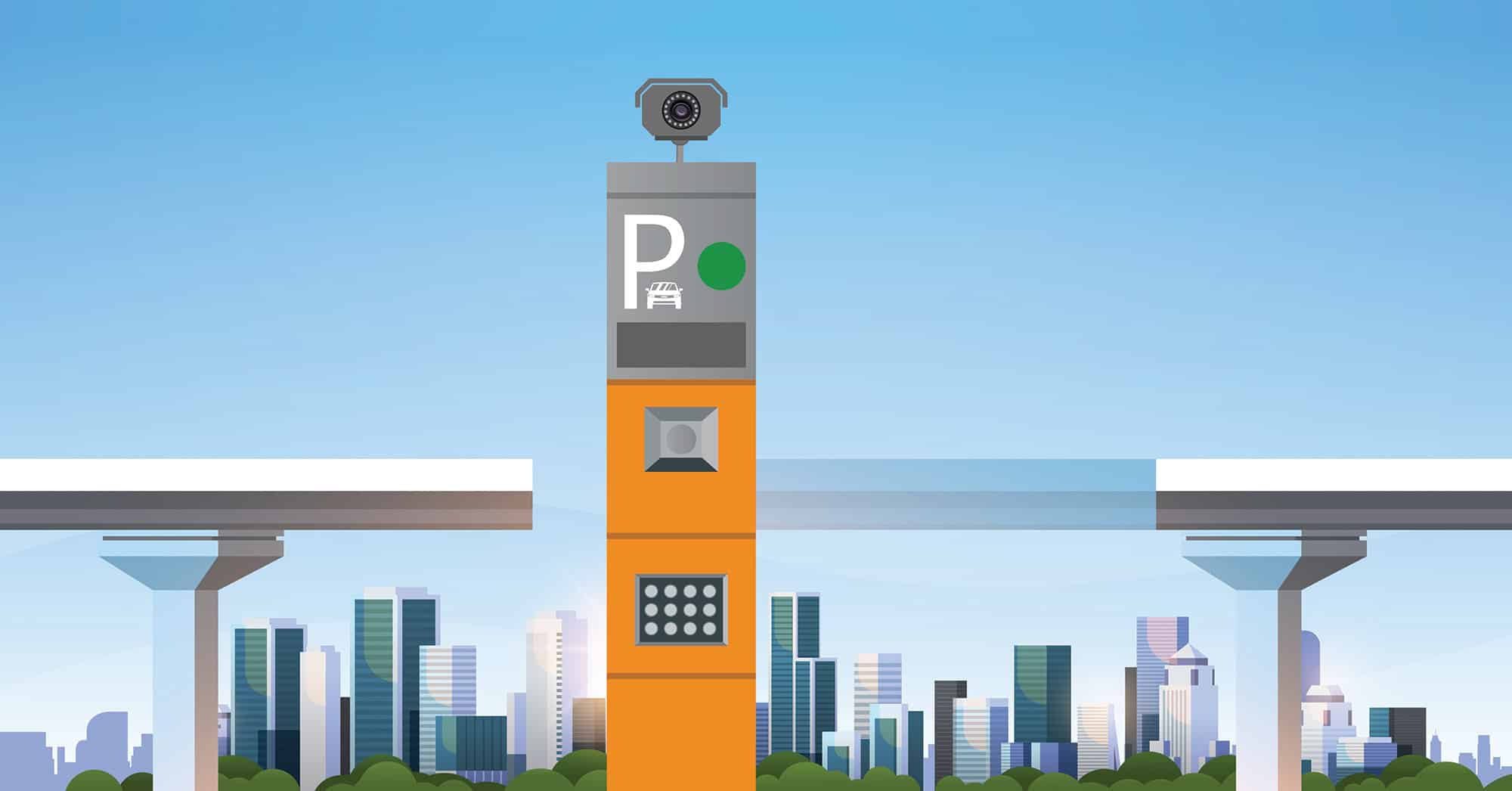
Bridging the Generation Gap
Technology s Transformative Role in Shaping the Parking Workforce
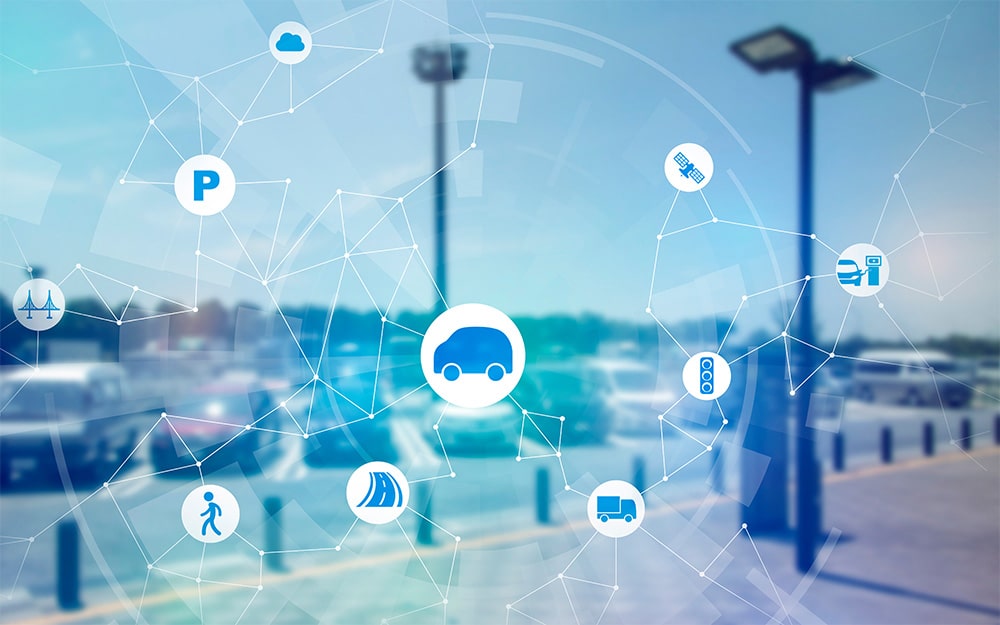
The Prudent Choice
Why Parking Operators Should Remain Technology Agnostic

